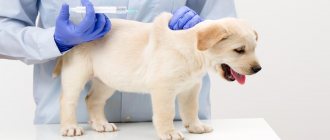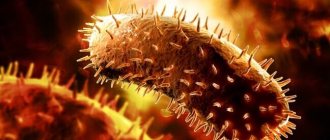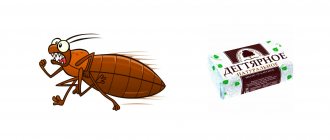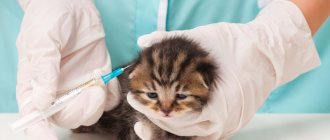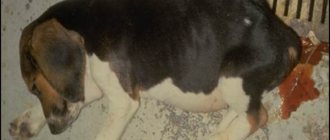You become a dog owner, which means you are now fully responsible for the health and well-being of your pet.
A responsible owner is not only one who properly feeds, walks and trains dogs, but also constantly monitors the health of your pet.
The greatest danger to the health of dogs is infectious diseases. Very often, they even lead to the death of the animal. The only effective way to prevent a dangerous disease is vaccination.
So, what diseases should dogs be vaccinated against and how to do it correctly?
The most common infectious diseases of dogs:
- plague
- parvovirus enteritis
- parainfluenza
- infectious hepatitis
— leptospirosis
- hydrophobia
To prevent them, there are many vaccines that differ in manufacturer, valence, and significance.
The special account is rabies, an extremely dangerous infectious disease that can also affect humans. Vaccination against rabies is carried out according to general rules, starting from the age of 3 months.
Why do dogs need vaccinations?
Many of the diseases that vaccination can protect against are fatal to the dog and dangerous to its owner. Among the most common infectious diseases are rabies, plague, parvovirus and coronavirus enteritis, viral hepatitis, parainfluenza, leptospirosis and some others. You can get a recommendation from your veterinarian about what vaccinations your dog needs.
Vaccination should be carried out within the specified time frame; the puppy has antibodies in its blood from its mother’s milk, which last up to 1.5 months. Then the defense weakens. At this moment the first vaccination is needed. It is necessary to protect your pet from dangerous diseases as early as possible, but you cannot vaccinate too early, as an immune response may not be formed.
Which vaccine is better to use?
The best proven Nobivac, Doramon, Avangard, age. Many breeders use cheaper or domestic vaccines.
It is difficult to say unequivocally which one is better. Any vaccine can “break through” (a dog gets sick, despite vaccines); no manufacturer gives a 100% guarantee. But still, the chances of vaccinated animals getting sick are very small and bad; such a dog tolerates the disease much easier than unvaccinated ones.
Review of popular vaccines
Currently, there are quite a large number of vaccines from various manufacturers on the market. Let's look at the most popular of them.
Nobivak
The Dutch vaccine manufacturer proposes to use Nobivak for vaccinations. This is a high-quality vaccine with a relatively inexpensive cost. There are several types of Nobivak.
Nobivac DHPPI
Protects the animal from diseases such as leptospirosis, parainfluenza, rabies, canine distemper, infectious hepatitis, parvovirus enteritis. Administered to puppies from 2.5 months of age and adult dogs. Puppies are vaccinated at 10 weeks, then 1 month later, then annually.
Nobivac L
Eliminates infection of dogs with leptospirosis. The drug is administered to puppies from 2 months of age, then after 21 days the procedure is repeated again.
Nobivac KC
Prevents the development of bordetellosis and parainfluenza. Available in the form of a suspension for oral administration. Suitable for newborn puppies and pregnant bitches.
Nobivac R
Effective against rabies. Injected into the muscle or subcutaneously. Provides the dog with lasting immunity from the disease for 3 years.
Nobivac RL
A complex drug that prevents infection with rabies and leptospirosis. Animals over one year of age are subject to vaccination with this drug.
Nobivac DHP
Complex vaccine against hepatitis (infectious), distemper and parvovirus enteritis. Performed on puppies who have reached 2 months of age, revaccination – after 21 days.
Rabisin
A French-made vaccine with a monovalent effect forms a stable protective reaction against the rabies virus. The drug is well tolerated by animals, but is incompatible with other vaccines. The period of validity of the vaccine is 1 year.
Dipentavak
The drug is of domestic origin. A polyvalent remedy against adenovirus, parvovirus, leptospirosis and infectious hepatitis.
Biovac
Live vaccine of domestic production. It has several types: Biovac – L (leptospirosis); Biovac – D (canine plague); Biovac – P (parvovirus); Biovac – DPA (distemper, adenovirus, parvovirus, infectious hepatitis); Biovac – PA (parvovirus enteritis, adenovirus); Biovac – DPAL (plague, adenovirus, parvovirus, leptospirosis). Raising a puppy must be approached with full responsibility. It is important not only to provide the animal with daily walks, quality food, love and care, but also to do everything possible to ensure that the pet grows up healthy. Timely vaccination will help the dog owner protect his four-legged friend from most serious and dangerous diseases.
It is better to get vaccinated from a veterinarian
Even if you have to give injections, in the case of vaccinated dogs, it is better to consult your veterinarian. The ideal option is for a specialist to call you back at home from a trusted, well-established veterinary clinic.
Vaccinations play a huge role in vaccine storage conditions, especially temperature. A vaccine that was stored in a warehouse or transported at temperatures that do not meet the requirements, it turns into ordinary water, the protection of which is no longer possible to count.
The clinic values its reputation, will never allow the purchase of a vaccine without evidence or dishonesty of the supplier and will not allow itself to be broken.
If you do decide to vaccinate your dog yourself, be sure to check the expiration dates and remember to take ice to bring the vaccine home. At home, immediately put it in the refrigerator (not the freezer!). Usually vaccinations are given subcutaneously (at the withers), but when purchasing a vaccine, check all the details.
Vaccination against rabies is done only by a veterinarian in a clinic, which is a mandatory note in the veterinary passport and special registers for the management of this dangerous infection. Monthly registers are sent to state veterinary institutions, where they are stored.
How to give a dog an injection yourself
There are several rules that will help you correctly inject your dog. The correctness of the procedure depends on the method of administration.
Subcutaneous administration
In 60% of cases, injections are placed under the skin. Most often, the area at the withers is chosen for this purpose. Here the muscles actively work, which quickly distribute the drug throughout the dog’s body.
When carrying out this procedure, you must follow the following rules.
- The animal should lie on your lap or on any horizontal surface. Preferably motionless.
- The skin on the withers should be taken with three fingers: thumb, index and middle. Pull slightly at an angle of 50 degrees.
- Before the dog begins to become interested in what is happening, you need to quickly inject the solution. The fluid must be administered with high intensity so that the animal does not begin to twitch and cause harm to itself.
- Immediately after the injection, you need to lightly massage the affected area to prevent the formation of a lump.
Monitor your pet carefully for the first few hours.
Intramuscular injection
The skin of most dog breeds has a thick antibacterial layer.
And in order to reach the required place for injection, you need to bring the animal into a relaxed state. To do this, the pet is petted, given a light massage, and distracted in every possible way.
- Before giving the injection, you need to carefully rehearse.
- You can only prick a dog correctly at a right angle. Then the probability of reaching the muscle is almost one hundred percent.
- The needle is inserted 2/3 of its entire length.
- Apply pressure on the syringe plunger with medium intensity.
- After removing the needle, you need to apply a cotton swab soaked in alcohol to the affected area.
The most commonly used area for intramuscular injection is the dog's upper outer thigh.
Intravenous injection
An intravenous injection is given into the subcutaneous area of the forearm.
Read Etiology of actinomycosis in dogs: signs, therapy and prevention
This procedure must be carried out by a veterinarian. But if there is no help from a specialist, you can try to make an intravenous puncture yourself.
The preparatory stage completely repeats the previous methods.
Important! For small breed dogs, you can use the method of insertion into the front paw, the place in front of the elbow joint on the inside. The vein should be easily palpable and visible through the skin.
- First, a catheter is installed. The animal must be distracted.
- The needle is inserted ⅔.
- After this, you need to quickly draw the required solution into the syringe and connect it to the needle.
- The dog should not get rid of the needle during this time.
- The solution is injected into the vein very slowly. It's great if someone helps you hold the dog.
- Immediately after the injection, it is necessary to treat the area and hide it under a layer of cotton wool and gauze.
The dog needs rest. Be careful not to scratch the injection site, as some products may make it itchy.
The first vaccination is given twice, with a 21-day break
Whether you have vaccinated a puppy or an adult dog for the first time, the first vaccination is done twice according to the following scheme:
- anthelmintic (we use special products to glistogonno a puppy)
- repeat deworming 2 weeks after the first deworming
- first vaccination (10-14 days after the second administration of anthelmintic)
- second vaccination (21 days after the first vaccination).
The second vaccination should be identical to the one that struck the first! The difference in strains and their quantities (vaccines cover 1, 3, 5, even 7 diseases) can be fatal to a dog’s health.
So: with glue or make sure that the vet is pasting the stickers from the vaccine ampoules into the veterinary passport of your dog first, so that he can hit exactly the vaccine that is the first.
If you have not vaccinated yourself, buy two equal doses.
What side effects may occur?
To carry out vaccination, you should invite a veterinarian to your home. Sometimes breeders themselves can vaccinate a baby, then it’s worth taking him to them. Before the process of vaccinating a dog, a veterinarian conducts a thorough diagnosis of the pet’s appearance and measures its temperature.
READ Proper care of cats: keeping them at home
After a thorough examination of the puppy and measuring the body temperature, the doctor proceeds to the process of vaccinating the pet. Most often, vaccines come in the form of an ampoule or vial containing about 1–2 ml of solution. In any case, only one dose is administered to the dog, the vaccination most often occurs intramuscularly into the back of the dog's thigh. In some areas, the vaccine is administered using a subcutaneous injection method.
After the vaccination, you should intensify monitoring of your little friend. Most often, dogs easily and quickly tolerate various injections, but sometimes local or general adverse reactions of the pet’s body can occur.
In 5% of cases, a lump or slight swelling may occur in the injection area. This place should not be treated in any special way; such a lump on the pet’s body will resolve on its own in 1–3 weeks. If the swelling becomes larger or the injection site begins to hurt, you should immediately seek help from a specialist.
Allergic reactions to vaccination almost never occur. At the same time, there is a possibility that the dog will experience anaphylactic shock, this is normal, because the body can react this way to any biological drug. This reaction of the dog’s body can occur 5–15 minutes after the vaccination.
Common reactions to vaccination include:
- Body temperature equal to 39 degrees.
- Refusal to feed for a while.
- One-time diarrhea or nausea.
- After vaccination, your pet may seem lethargic.
WHAT AND WHEN TO VACCINATE PUPPIES AND DOGS | DOGMA AND THE VETERINARIAN
Quarantine is required during vaccination
Immunity does not develop immediately after vaccination. The vaccine is a special solution that contains a certain amount of a weakened pathogen. The immune system recognizes foreign bodies and begins to fight them. The body produces specific antibodies that will be ready to repel an attack in the event of a threat from this infection.
Antibody production occurs over a period of time after vaccination—usually 8 to 14 days. At this time, the dog may feel slight discomfort. Therefore, it is important to make sure that the animal is not exposed to additional threats from outside.
During vaccination, try to avoid contact with other dogs, walking in places with large concentrations of animals (training grounds or places for walking), and unnecessary visits to veterinary clinics, because sick animals are also brought there. This advice is especially relevant for owners of puppies who are giving them their first vaccination.
Do not be overly active walking dogs, training dogs, learning to swim (try not to get the vaccination site wet for at least a few days).
Monitor your dog closely and contact a veterinarian immediately if the animal's condition worsens.
After creating immunity, you can safely return to your previous lifestyle; your pet is already protected!
What vaccinations does a puppy need?
Typically, owners worry not only about when to vaccinate their puppies, but also about which vaccines are required. Each region has its own list of infectious diseases from which it is imperative to protect your beloved pet.
When your pet turns one year old, you should undergo a comprehensive vaccination
However, there are several ailments for which vaccination against is mandatory in all parts of our country.
- Rabies is a dangerous disease that leads to severe suffering and death of a dog. When bitten by an infected animal, it can be transmitted to humans. The rabies vaccine must be given every year. As a rule, vaccination is easily tolerated and does not cause complications.
- Distemper is an infectious disease that also causes death. The vaccine is easily tolerated by the puppy, but in rare cases it can cause lethargy and loss of appetite. The illness goes away without medical attention within 2-3 days.
- Parvovirus gastroenteritis is an intestinal disease that causes complete dehydration of the pet's body. The vaccine is given for the purpose of prevention and is tolerated without complications.
- Leptospirosis is another infectious disease that can also cause death. Vaccination is carried out for preventive purposes and does not cause complications.
Depending on the characteristics of the area of residence, the first vaccination may include other vaccinations. Your doctor may consider it necessary to administer medications to protect against:
- piroplasmosis;
- coronavirus enteritis;
- canine parainfluenza;
- Lyme disease;
- viral hepatitis.
The recommendations of doctors who vaccinate puppies should be heeded. Experts know better what infections are common in the region and pose a danger to your pet.
Today, not only single vaccines are widespread, but also complex vaccinations. The latter are more preferable because they protect puppies from several of the most common diseases at once.
Only a specialist should vaccinate a dog. It is not recommended to carry out the procedure yourself at home, especially if the person has no experience with such manipulations. Another important rule: when visiting the clinic, the owner should not be nervous, since excitement can be transmitted to the animal, making it disobedient and restless.
The doctor selects the required injection site depending on the type of drug. Typically, vaccinations are given in the scruff of the neck or in the thigh muscle. Each injection given must be included in the dog’s passport. This is necessary so that the owner knows when to come to the clinic next time.
The veterinarian himself also informs you about the time when you need to get vaccinated, but, as a rule, specialists adhere to vaccination schedules of up to one year. The general principles of vaccination are divided into:
- Age 8–10 weeks. The vaccination is carried out against viral hepatitis, canine distemper, and parvovirus enteritis.
- Age 11–13 weeks (that is, a couple of weeks after the first vaccination). The second vaccination against canine distemper, parvovirus enteritis, and viral hepatitis. Along with this vaccination, another one against rabies is given. If the risk of contracting rabies in a puppy is low (the dog is in a kennel or in other places where it is difficult to come into contact with infected individuals), then a rabies vaccination should be done at the age of 6–9 months.
The main thing is to correctly schedule the puppy’s first vaccination. Puppies that are still drinking their mother's milk have passive (maternal) immunity in their bodies. It is formed thanks to antibodies resistant to infectious diseases, which the mother gives to her offspring through milk, especially with its first portions - moloviz. If the dog has not been vaccinated against infections, then the babies will not receive any additional immunity.
It is for this reason that you should buy small puppies from responsible and trusted breeders who are responsible for the puppies, for their health and who vaccinate the offspring in advance. So, any vaccination will create immunity in a puppy no earlier than in a few weeks, and if maternal immunity is at a low level, then at this time the puppy has a high risk of acquiring any infection.
If the number of puppies born is small, and the mother has a lot of milk, then the time of vaccination can be postponed to 10 months, but if there are many babies, and a lot of complementary food is already given in one month, then vaccination occurs at 6–8 weeks, provided that that the kids look healthy and active. Puppies with general weakness should be vaccinated 1-2 weeks later.
It is not recommended to vaccinate puppies younger than two months of age. After all, at this time, the mother’s antibodies in the baby’s blood will interfere with the formation of a healthy reaction to the vaccine. Also, at this time, the puppy’s immune function is not one hundred percent fulfilled, so it does not work at full capacity.
Such a vaccination may be justified at a time when some disease is particularly widespread in the nursery, and there is no maternal immunity to it. It is at this time, when the puppy is 10–12 weeks old, that the vaccination is repeated, and then the baby is vaccinated again after an interval of three to four weeks.
Dog owners often have a question: when should they vaccinate their puppy - before or after changing teeth? Indeed, sometimes vaccines can change the enamel of a puppy’s teeth and significantly change its color, so there is an opinion among dog breeders that it is worth vaccinating developing babies before the period of teeth change or after it, when the puppy reaches the age of six months.
READ Pug puppy care and proper nutrition
